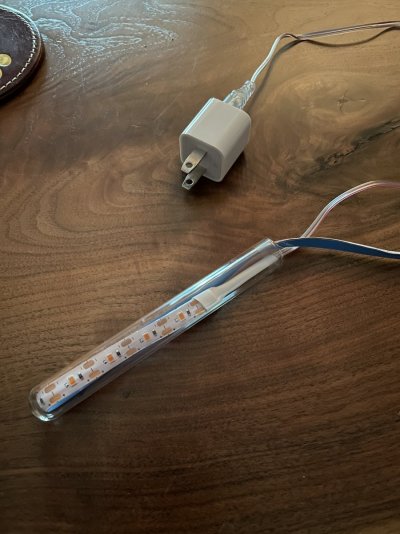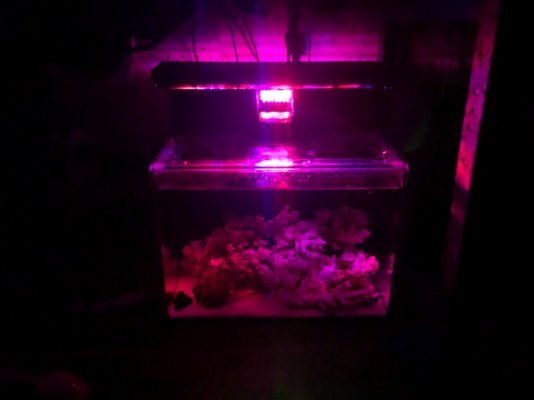I’m looking for a way to potentially grow chaeto in the rear middle chamber of my AIO Waterbox Peninsula 15 gallon. After searching for submersible lights and not finding many small options, I’m considering DIY.
After finding some YouTube inspiration, I have a prototype. I purchased a cheap $7 USB LED grow light strip that is customizable for length off of Amazon. My plan is to place the light strip in a test tube for extra water resistance (the light strip isn’t submersion rated, only water resistant). Then I can silicone the end of the test tube shut.
I still have to find a way to keep the tube submerged in the water, ideally with the siliconed end above the water line to help with water resistance.
thoughts? This is just a prototype and I might try to find a slightly longer glass tube to allow it to hold more of the LED before I trim the strip, but you get the idea.

After finding some YouTube inspiration, I have a prototype. I purchased a cheap $7 USB LED grow light strip that is customizable for length off of Amazon. My plan is to place the light strip in a test tube for extra water resistance (the light strip isn’t submersion rated, only water resistant). Then I can silicone the end of the test tube shut.
I still have to find a way to keep the tube submerged in the water, ideally with the siliconed end above the water line to help with water resistance.
thoughts? This is just a prototype and I might try to find a slightly longer glass tube to allow it to hold more of the LED before I trim the strip, but you get the idea.





















